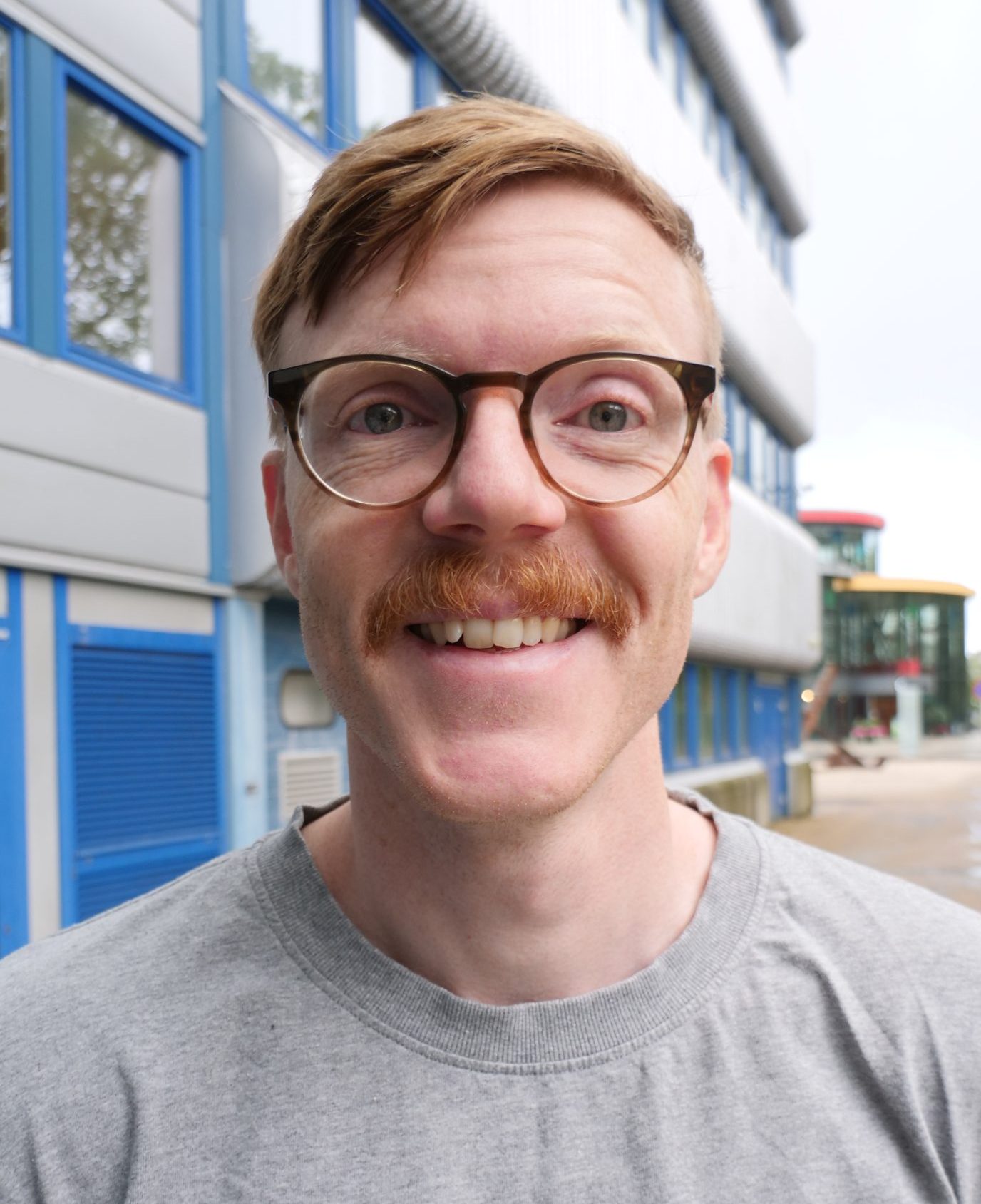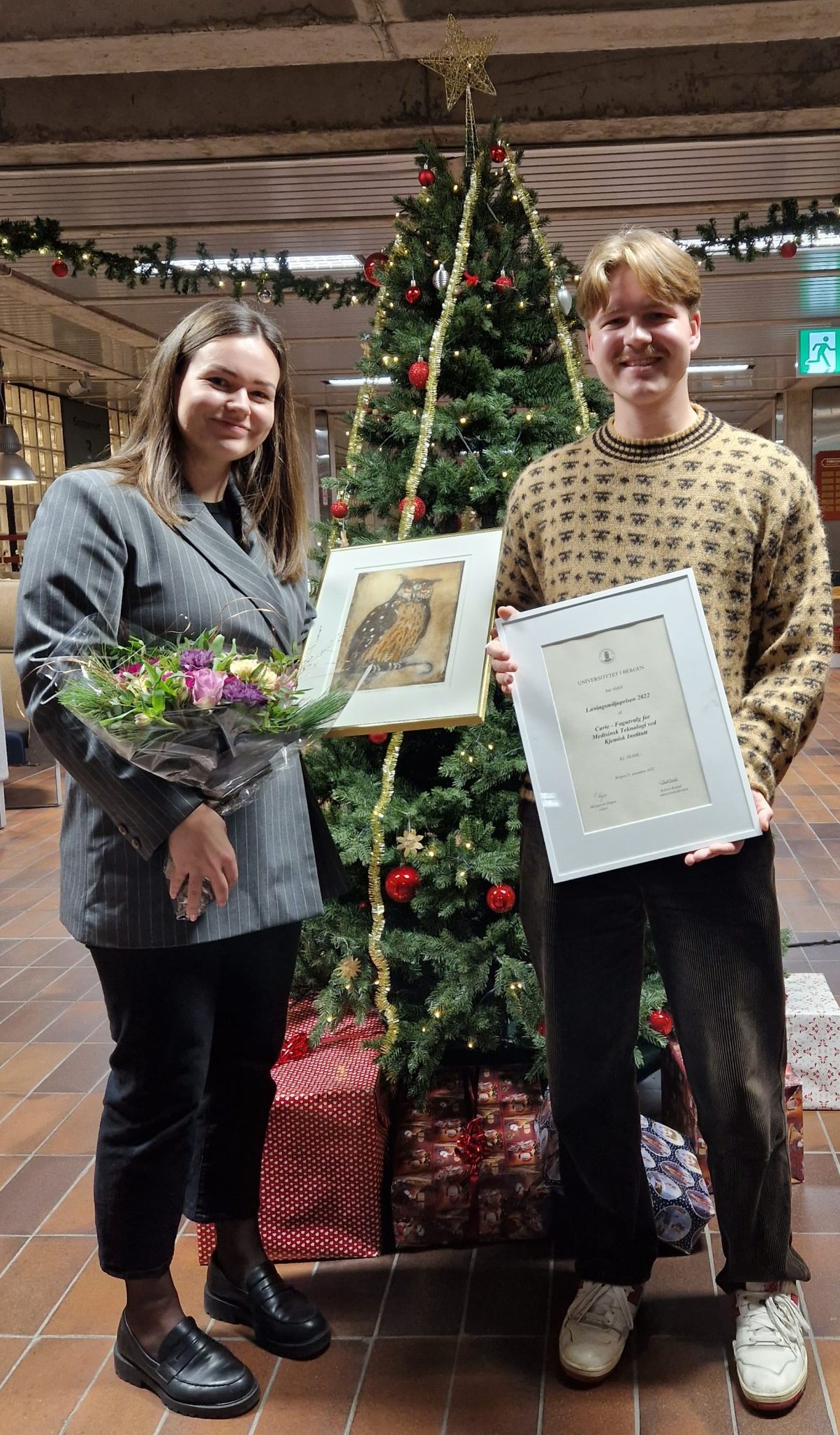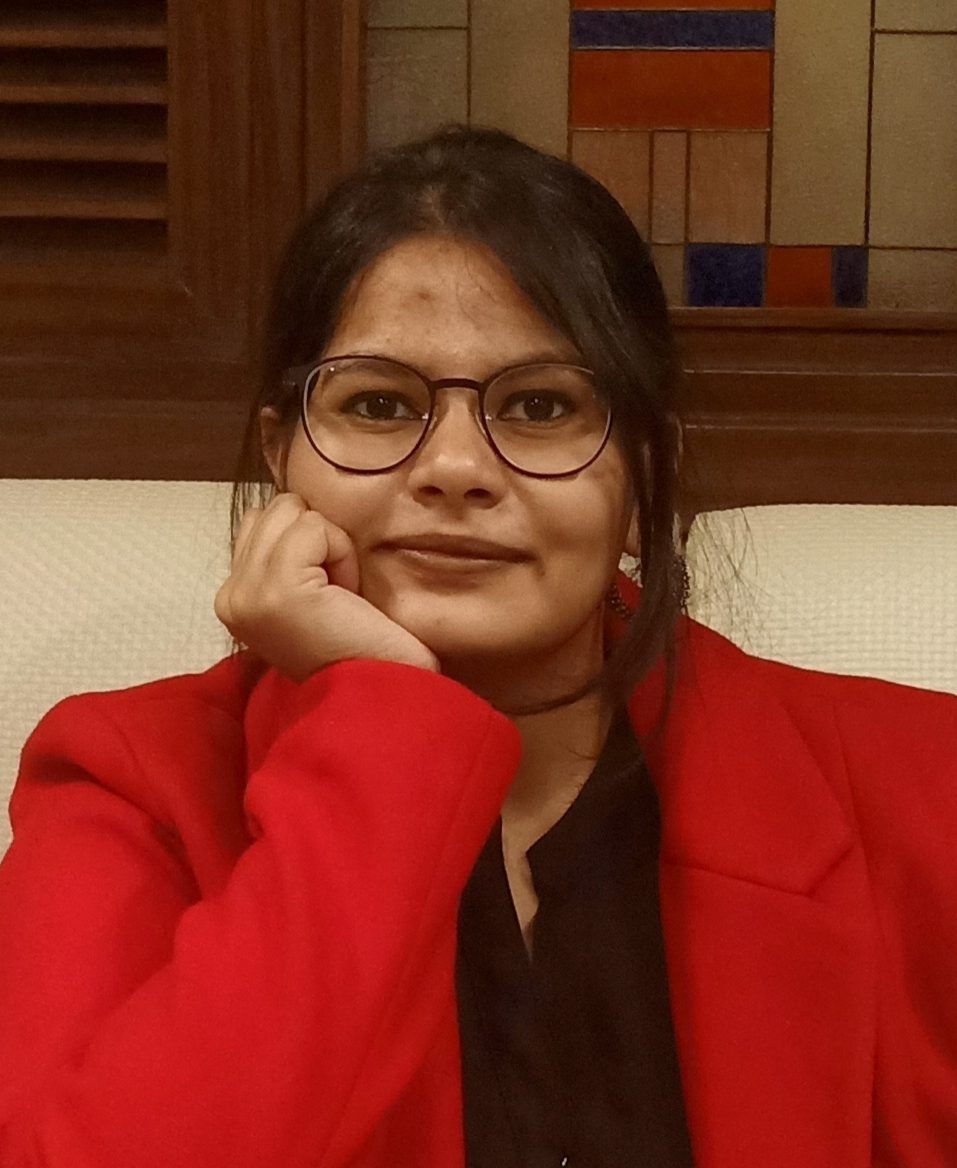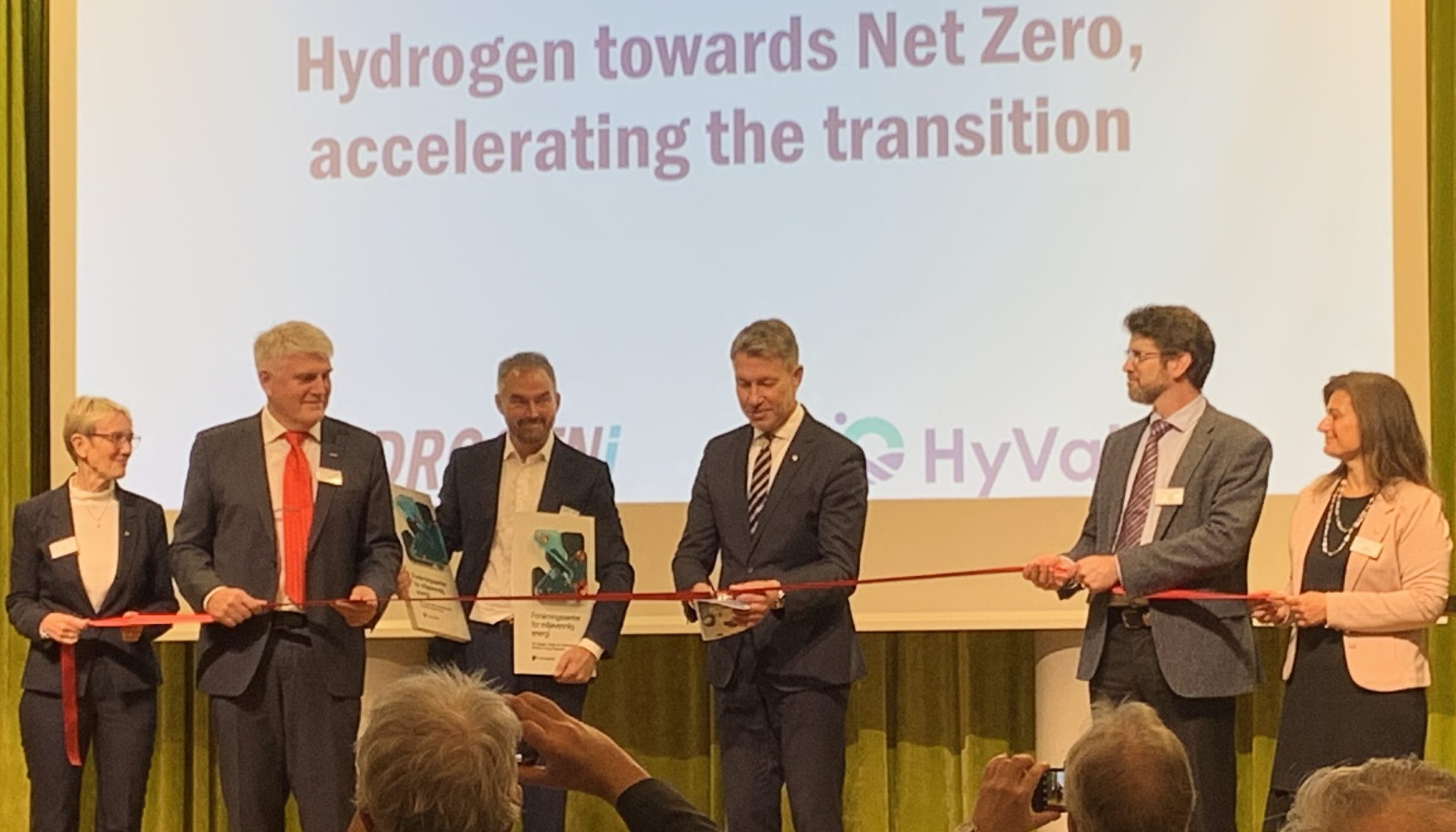About nkjkb
View all posts by nkjkb
Minneord over Sverre Hauge
 Sverre Hauge, tidligere førsteamanuensis (1965-2004) og instituttstyrer (1984-85) ved Kjemisk institutt, gikk bort 8. januar i år, vel 90 år gammel.
Sverre Hauge, tidligere førsteamanuensis (1965-2004) og instituttstyrer (1984-85) ved Kjemisk institutt, gikk bort 8. januar i år, vel 90 år gammel.
Da dr. tech. Olav Foss i 1956 etterfulgte professor Gaarder som styrer ved Kjemisk institutt, etablerte han raskt en forskningsgruppe innen uorganisk kjemi. Sverre Hauge var en av hans tidlige studenter som etter oppnådd embetseksamen i kjemi (cand. real. 1960), ble rekruttert som stipendiat og fra 1965 ansatt i fast vitenskapelig stilling, først som universitetslektor og fra 1971 som førsteamanuensis fram til aldersavgang i 2004.
Forskningen på Uorganisk avdeling var i hovedsak konsentrert om syntese, kjemiske egenskaper og struktur av svovel-, selen- og tellur-forbindelser, og Sverre spesialiserte seg på studier av selen-forbindelser. Hans dr. philos. avhandling fra 1978 har tittelen Linear three-selenium systems, reactions and crystal structures.
Fra siste del av 1980-tallet samarbeidet Sverre Hauge og hans nære kollega førsteamanuensis Kjartan Marøy om studier av kalkogen-halogen-forbindelser. En rekke nye salter av polymere kloro- og bromo-selenater ble syntetisert og isolert fra ikke-vandige løsningsmidler og karakterisert ved røntgenkrystallografiske metoder. I noen av forbindelsene forekommer selen i to oksidasjonstrinn, og figuren (under) viser et dianion med oktaedrisk-koordinert Se(IV) og kvadratisk-planart Se(II) atom, forbundet med to bromid-broer.
Da Kjemisk institutt ønsket å etablere aktivitet innen uorganisk analytisk kjemi, tok parhestene Hauge og Marøy, som begge var sentrale bidragsytere innen instituttets undervisning i analytisk kjemi, opp forskning og veiledning innen dette feltet. Prosjektet som varte en 10-årsperiode fra midt på 1980-tallet, omfattet utvikling av metoder for kvantitativ bestemmelse av fosfat, sulfat og halogenider ved molekylær emisjons-spektroskopi i flamme, bestemmelse av tungmetaller i vev, samt fjerning av fluorid fra brønnvann. Én dr. scient.- og fire hovedfags-kandidater utførte sine forskningsprosjekter hos Sverre og Kjartan i denne tiden.
Som i våre dager, var andre halvdel av 60-tallet en tid for hektiske byggeplaner for realfagene ved UiB. Ved Kjemisk institutt la spesielt Sverre Hauge ned et stort arbeid med planlegging av forsknings- og undervisningslaboratorier, kontorer, og innredning. I 1971 kom første bevilgning til utgraving av tomt, bygging startet i august 1974, og i juni 1977 sto Realfagbygget klart. Kjemisk institutt kunne flytte inn i rommelige, moderne og hensiktsmessige lokaler, og Sverre høstet stor anerkjennelse for innsatsen som han la ned til fellesskapets beste!
Vi takker Sverre for en lang arbeidsdag og lyser fred over hans minne.
Tidligere og nåværende kollegaer ved Kjemisk institutt.
Meet our new Head of administration!

Hei KI!
Pål her, og i januar begynner jeg som administrasjonssjef på Kjemisk institutt. Jeg er innflytter fra Mandal med 20 års fartstid i Bergen, de fleste av dem har jeg vært tilknyttet UiB. Først som student på Humanistisk Fakultet, og så de siste åtte årene som ansatt ved MatNat. Jeg har jobbet i studieadministrasjonen på Geofysisk institutt, Institutt for fysikk og teknologi og nå sist som studieleder ved Institutt for informatikk. Gleder meg veldig til å ta fatt på ny jobb og til å bli kjent med dere alle sammen!
Hello KI!
I am Pål, and this January I will start my new position as Head of Administration at the Department of Chemistry. I am an “immigrant” from the southern-most city in Norway, Mandal, and have lived in Bergen for 20 years. The majority of these years have been with a connection to UiB, first as a student at the Faculty of Humanities, and then the last eight years as an employee at MatNat. I have worked in the study administration of Geophysical Institute, Department of Physics and Technology and finally as Head of Study Section at the Department of Informatics. Looking forward to embarking on my new position and to getting to know all of you!
Winning the annual HSE award
At the faculty-wide HSE seminar earlier this month, the Dept of Chemistry was awarded the HSE prize for 2022, on account of our continuous and systematic work related to the labeling and waste management of chemicals.

Photo: Christel Krossøy/UiB
The award committee, consisting of dean Gunn Mangerud, chief safety representative Ann-Elise Olderbakk Jordal, faculty director Elisabeth Müller Lysebo and HSE coordinator Christel Krossøy, see this as an important and timely initiative that shows HSE in practice, and which has good potential for transfer to the other institutes. The committee also commends the institute for writing a well-developed and descriptive application.
Head of department Knut Børve at the Department of Chemistry is delighted with the award: The award focuses on good routines for the storage, labeling and waste management of chemicals, which is important for the physical working environment in many departments both within and beyond the MN faculty. At the Department of Chemistry, this is high on the agenda, well driven by our HSE coordinator Lisbeth Glærum and long-standing health and safety representative Reidun Myklebust. We are happy for the recognition that the HSE award gives, and for the opportunity to inspire other departments to carry out an annual waste disposal campaign for chemicals.
A full account in Norwegian may be found here: https://www.uib.no/matnat/158578/hms-pris-til-kjemisk-institutt
Curie vinn UiB læringsmiljøpris for 2022
Læringsmiljøprisen 2022
UiBs læringsmiljøpris har vært lyst ut årlig siden 2009. Alle studenter og studentorgansiasjoner er invitert til å sende inn forslag på kandidatet til Læringsmiljøutvalget. Formålet med læringsmiljøprisen er å gi anerkjennelse til miljøer eller enkeltpersoner ved universitetet som lykkes i å legge forholdene spesielt godt til rette for studentenes læring gjennom faglig, pedagogisk og sosial innsats eller gjennom tilrettelegging av læringsmiljøet. Dette omfatter det fysiske, det psykososiale, det pedagogiske, det organisatoriske og det digitale miljøet, i tillegg til universell utforming.

Foto: Kari Nordvik
Vinner av UiB’s Læringsmiljøpris for 2022 er Fagutvalget for Medisinsk Teknologi UiB! Vi gratulerer med pristildelingen; Så kjekt og fortjent — Takk for flott innsats for MedTek-studiet og -studentene!
Welcome Amrita!
Hello everyone!
 I am Amrita Panigrahi. I am an organic chemistry graduate from Bengaluru, India. I am starting my PhD research on frustrated Lewis pairs in metal-organic frameworks (MOFs) and their properties towards hydrogen and nitrogen activation in the Dietzel group. I have previously worked at Jubilant Biosys as a research associate in synthetic organic chemistry and analysis. You can find me in Room no. 2002, 2nd Floor.
I am Amrita Panigrahi. I am an organic chemistry graduate from Bengaluru, India. I am starting my PhD research on frustrated Lewis pairs in metal-organic frameworks (MOFs) and their properties towards hydrogen and nitrogen activation in the Dietzel group. I have previously worked at Jubilant Biosys as a research associate in synthetic organic chemistry and analysis. You can find me in Room no. 2002, 2nd Floor.
Mali receives certification as holder of the prestigious TMS Starting Grant

TMS Starting Grant. Foto: Eivind Senneset, UiB
On the 1st of August 2022, Mali’s TMS Starting grant project, Recyclable Catalysts for Sustainable Polymers from CO2 and Bio-based Epoxides (ReCat4Polymer), officially started. On Friday the 23rd of September she officially received her TMS badge from the Trond Mohn Foundation. The event was the TMS alumni night at Tårnsalen at the University Museum. Our rector Margareth Hagen was also present to celebrate the three new grant holders, Mali from Chemistry, Suzette Flantua at the Department of Biological Sciences and Carina Strell at the Centre for Cancer Biomarkers (CCBIO).
The aim of the generous funds from the Trond Mohn Foundation and the University of Bergen is to build up a research group to study recyclable catalysts for the production of sustainable plastics, where CO2 will be used as one of the raw materials.

TMS Starting Grant. Foto: Eivind Senneset, UiB
Mali will develop efficient and fully recyclable catalysts for the sustainable production of modern materials without the use of fossil raw materials. The project focuses specifically on the development of recyclable catalysts for the production of sustainable polymers, where CO2 and bio-based epoxides will be used as raw materials. This will be an important contribution to the UN’s 12th sustainability goal; «Responsible consumption and production». The key to obtaining suitable and recyclable catalysts lies in introducing polyoxometalates (POMs). POMs are a special class of inorganic compounds that is one of Mali’s specialties from her PhD at the University of Glasgow, Scotland. PhD student Leah Kristen Rai is already in place at the institute.
Welcome to Leah!
Hi, my name is Leah Kristen Rai and I am from India, Chennai, Tamilnadu.
I am a passionate Chemist with my Bachelors from Stella Maris College and Masters in Inorganic Chemistry from University of Madras. My area of interest is mainly on catalysis, and I also have experience with computational analysis and experimental work. I worked as Junior Research Fellow for a brief period at Anna University in the project “Production of JP-8 range fuels and chemicals using nanostructured catalysts” (DST Indo-Norway project). My other activities include travelling, photography, drawing…………….. and I am a lover of nature and animals.
Looking forward to pursue my research at UiB with confidence and perseverance!
Update on Biogas research at TCLS this week

TCLS this week focused on Biogas; the gas mixture of methane (50-70%) and carbon dioxide (50-30%) that many of the local buses use for fuel. Assoc. Prof. Vasan Sivalingam and PhD-student Gudny Flatabø visited from Department of Process, Energy and Environmental Technology at the University of South-Eastern Norway (https://www.usn.no/english/about/contact-us/employees/vasan-sivalingam), and Vasan presented his research on how to advance methane yield in biogas by integration of fermentation of syngas (mixture of H2, CO2 & CO) and microbial electrosynthesis (MES). In return, Stian Hegdahl, phd-student at our department, explored and explained how to wrestle bio-oil from residues from the biogas production. He also exemplified the fate of pharmaceutical drugs when exposed to conditions needed for hydrothermal conversion of feedstock to make Bio-Oil.
Click- chemistry wins the Nobel prize
 The Nobel prize this year is split equally between K. Barry Sharpless (Scripps Research, USA), Morten Meldal (Københavns universitet) and Carolyn R. Bertozzi (Stanford U., USA); the two first for laying the foundations of click chemistry, and prof. Bertozzi for putting it to good use in mapping living cells.
The Nobel prize this year is split equally between K. Barry Sharpless (Scripps Research, USA), Morten Meldal (Københavns universitet) and Carolyn R. Bertozzi (Stanford U., USA); the two first for laying the foundations of click chemistry, and prof. Bertozzi for putting it to good use in mapping living cells.
The principle of click chemistry is illustrated in the scheme, ”© Johan Jarnestad/The Royal Swedish Academy of Sciences”. The reaction between an azide and an alkyne, in the presence of catalytic amounts of copper, produces quickly and without byproducts the corresponding substituted triazole, even in water and in the presence of air.
For a pop-sci introduction to this fascinating topic, please go here. A more in-depth exposition is to be found here.
It should be mentioned that this is prof. Sharpless´ second Nobel prize in chemistry. He also won in 2001, for his contributions to the development of «broadly useful and commercially viable catalytic oxidation chemistry for the selective production of bioactive chiral molecules.»
HyValue and HYDROGENi opened today
Hydrogen and ammonia are the foci of two new Senters for Environmentally-Friendly Energy Research: HyValue and HYDROGENi. HyValue is led by Norce Research, with Dept of Chemistry a strong contributor to work package 1, led by prof. Vidar R. Jensen.  The two centra were opened and celebrated in a common kick-off meeting in Oslo today, with greetings and expectations delivered by the the minister of petroleum and energy, Terje Aasland, pro-rector at UiB, Pinar Heggernes, and secretary general of the European Energy Research Alliance, Adel Gammal, and others.
The two centra were opened and celebrated in a common kick-off meeting in Oslo today, with greetings and expectations delivered by the the minister of petroleum and energy, Terje Aasland, pro-rector at UiB, Pinar Heggernes, and secretary general of the European Energy Research Alliance, Adel Gammal, and others.